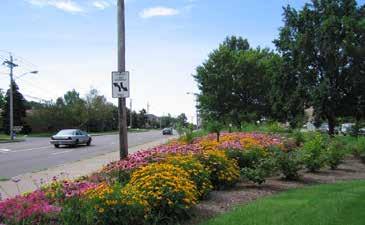
9 minute read
Sustainable Design
By Bruce Zaretsky, Zaretsky and Associates, Inc.
Sustainability. The newest buzzword or a reality-based concept? Every year, there’s a new trend. One year it’s the year of the water feature. The next, it’s container gardens. Recently, all the talk has been about backyard kitchens. These fads come and go. There are so many new ideas emerging every year that it’s sometimes hard to keep up with them. Some ideas deservedly run their course. Others hang on for longer periods of time. And mixed in with all of these ideas is this little concept: sustainability.
Advertisement
Sustainability. What is it? Is it the real thing? Or is it just a fad? Should you get on this bandwagon? Is it going to increase your bottom line? Is it the latest and greatest thing to “sell” to your clients?
It should be. It should be the core tenet of everything we do as designers and installers.
Sustainability in design and in our daily lives means simply that we do our very best to conserve resources and minimize waste. This means that we do things as simple as turning off the water when we brush our teeth. And as complex as designing everything, from gardens to office buildings, in as a “green” way as possible.
How do we do that? Well, we need to consider all aspects of our designs and installations. Look at waste products, water use, hauling distances and the like. Everything we do in my design/build practice revolves around not only our clients’ desires and the site conditions, but also how we approach the site in regard to conserving resources. We need to consider ourselves stewards of the earth, and if landscape designers aren’t stewards of the earth, then who else is? We are, almost by definition, required to preserve our planet; after all, we purport to be the ones beautifying it. Let’s look at a few simple processes that we can implement in order to live up to our billing:
If you are installers, take a quick look at your disposal costs for the last year. How many dumpsters did you fill with debris to be hauled off to the local landfill? How much of that debris could have been salvaged or reused on site, or on another project? Do you reuse scrap lumber and brick? Do you recycle your paper waste from your office?
I’m not suggesting that you design every project to use your leftover materials. But I am suggesting that you think about what you are going to do with your leftover materials. And how you design a site in the first place. We are almost too quick to “play God,” wiping out an entire site so that we can fulfill our “vision” for what the site should be. We rip out walls and shrubs and pools and regrade the land and haul in stone from distant shores and in the process fill dumpsters and landfills with thousands of tons of “waste” material a year and pay exorbitant shipping costs. Think about a new use for some or all of that waste.
As an example, we recently worked with a client who had us remove an old patio and retaining wall. The debris from this project, which is not all that large, would have filled a 30-yard dumpster. The retaining wall consisted of hundreds of old rotted pressure-treated timbers which cannot be reused (unfortunately, these do go to the dump). The original patio was installed about 15 years ago using two-foot-by-two-foot concrete slabs with scores in them to make them look like pavers. There were 250 of these slabs which, stacked up, would have taken up about 6 yards of that dumpster. But, aside from the fact that they were not visually desirable and a bit worn, they were perfectly usable for things such as a floor for garbage cans or firewood storage. What I told my client was that we were going to place these slabs on pallets

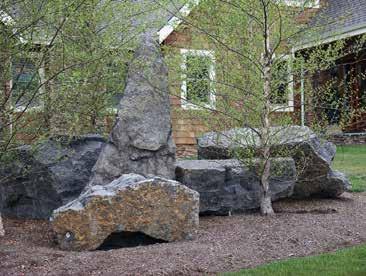
by the road with a “free” sign on them. One thing that humans love is the word “free.” I predicted that these would be gone by the time we finished the project, and they were. And it’s a great way to recycle an unwanted product. Now think about this for a minute. Not only do we save the cost of dumping these in a landfill, but also the hauling costs, the fuel usage, and the wear-andtear on the vehicles doing the hauling. It’s a win-win-win situation for the client, the hauler (the dumpster company), and the earth (not to mention the people who got their free slabs). And all it took was a simple thought: can these be reused?
The single biggest ecological concern at the moment is water. Do we have enough? Is it drinkable? Where are we going to get more? If you live in the northern part of the country, this probably isn’t your largest concern. After all, the Great Lakes supply much of the water used in the upper Midwest and Northeast. But what if you live in the South? Especially the Southwest? Where is your water going to come from? There has been discussion about buying water from the Great Lakes to supply the Southwest, but the chances of this happening are pretty small. So, what’s the solution? Well, let’s start with designing a little smarter. Let’s design plantings that will live in the region in which they are planted with little care, or water. Let’s stop designing lush green lawns in the middle of the desert. Tell your transplanted Northeastern-bred clients that they can’t have a lawn in Arizona. I know, they’re paying the bill, so they should get what they want. Here’s a thought: educate them instead. Instead of yessing them to death, teach them the ramifications of their decisions. A Dallas friend who is a garden designer sent us an article from a Dallas newspaper that listed the largest users of water in the area. Who do you think it was? A large corporate campus with acres of lawn? No, it was a residential user who put a million gallons of water on his lawn per month to keep it green. In his mind he thought “well, I can afford it, so why not?” We should be saying to him: “Why?” It’s insane to dump millions of gallons of water on a lawn.
We need to preserve water. And there are ways. Think about simple solutions, such as putting rain barrels under your clients’ downspouts. Catch some of that rainwater before it runs off into pipes taking it to the local stream or river. The less water you put into the municipal system, the less overtaxed it is. And this is important: in larger rainfalls, as municipal water treatment systems become overloaded, they literally “open the gates,” allowing the storm runoff mixed with raw sewage to run into our waterways. (These are combined sewer systems, and most larger cities and municipalities have them.) If we can lessen the rainfall impact into the system, we lessen the impact on our natural waterways. Your client can use that captured water to give to their containers and other plantings when it gets dry. Are they not inclined to do that? Put a small pump in the container and a moisturesensor in the garden. The barrel can then be used to automatically water the garden when things get dry.
Another thing to think about are the materials you use on your site. Is it of the utmost importance that you use a stone imported from Asia? Are there any local stones available that would fit the design? One of the requirements for LEED certification of buildings is that a certain percentage of building materials come from less than 500 miles away. This lessens the impact of hauling, minimizing fuel use, wear-and-tear, and road damage costs. It’s a great idea. I have been guilty of bringing
in materials from other areas because I didn’t think my local stone would work for a particular design. But, even though my two main stone suppliers are less than 400 miles away, I am thinking more in terms of using locally quarried stone. It not only fits the sustainability bill, but also lessens costs for our clients, which is never a bad concept.
We landscape designers, installers, and architects are stewards of the land. We shape the earth to benefit our clients. We design spaces of tranquility and excitement and beauty and practical use. We need to shape the earth to the benefit of the earth as well. We need to be the leaders of sustainable design. I suggest that we all educate ourselves fully in the practice of preserving our planet’s resources. It’s the only one we have at the moment and it’s us who can preserve it.
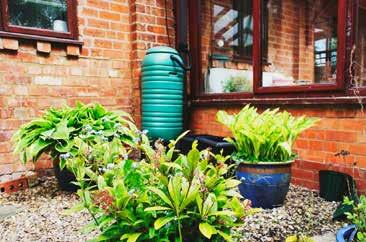
Reprinted with permission from The Landsculptor magazine, February 2020.

Landscape Specification Landscape Guidelines 6th edition Specification Guidelines 6th edition
E-Books Available on
www.amazon.com
Part 1: Exterior Landscape Installation Part 2: Exterior Landscape Maintenance Part 3: Interior Landscape Installation and Maintenance Part 4: Irrigation Part 5: Non-Tidal Wetland Planting Part 6: Seeding and Sodding Part 7: Soils Part 8: Tree Preservation
Order THE PRINT VERSION Online Today: www.lcamddcva.org
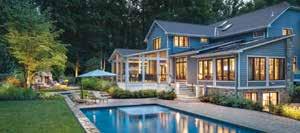
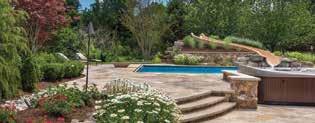
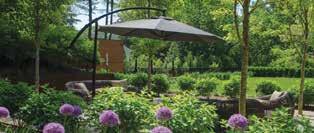
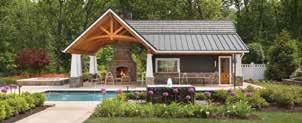

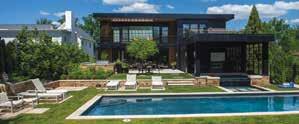
2021 LCA 2021 EXCELLENCE IN LANDSCAPE AWARDS
Online Awards Submission Open From May 17–August 16
“If it weren’t for the LCA Awards, we wouldn’t be half the company we are today. The LCA Awards are a significant part of our overall marketing plan, and we try to submit 4 or 5 projects every year.” Barry Schneider, President, Surrounds, Inc.
LCA Excellence in Landscape Awards recognize your best projects, and winners are published in HOME & DESIGN magazine. Enjoy these features offering convenience and value:
• Submission Platform—The submission site lets you upload photos, write descriptions, save and then return to your work, and submit each project with entry fee, all on one user-friendly platform.
• Plaques Included—Each award winner will receive one plaque free of charge.
• Entries Judged Against Criteria Only—Each entry is judged against its own category criteria—not against other submissions—so each category can have an unlimited number of winners!





